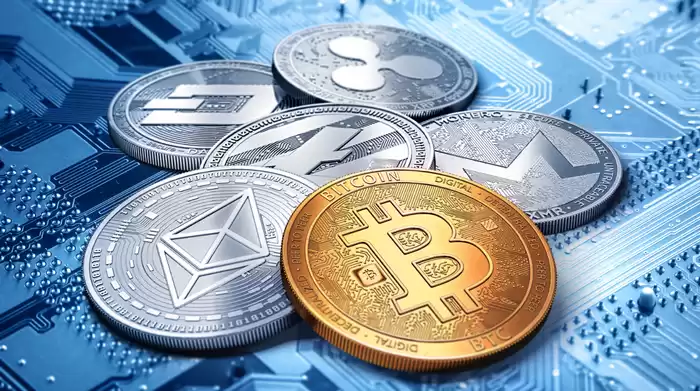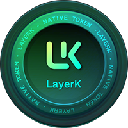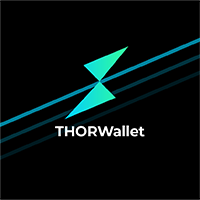-
 bitcoin
bitcoin $100977.009184 USD
-2.05% -
 ethereum
ethereum $3282.009150 USD
-3.23% -
 tether
tether $0.999813 USD
-0.02% -
 xrp
xrp $2.208254 USD
-4.89% -
 bnb
bnb $951.411089 USD
0.55% -
 solana
solana $155.761205 USD
-2.84% -
 usd-coin
usd-coin $1.000217 USD
0.02% -
 tron
tron $0.284475 USD
-1.28% -
 dogecoin
dogecoin $0.162363 USD
-1.53% -
 cardano
cardano $0.533988 USD
-0.47% -
 hyperliquid
hyperliquid $39.174339 USD
-3.22% -
 chainlink
chainlink $14.724828 USD
-1.16% -
 bitcoin-cash
bitcoin-cash $477.297986 USD
-1.28% -
 zcash
zcash $554.227426 USD
17.30% -
 ethena-usde
ethena-usde $0.998995 USD
-0.03%
Generative What does Art mean
In contrast to traditional art where the artist's hand directly shapes the creation, generative art employs algorithms or rules to create artworks through computer interpretation.
Oct 23, 2024 at 05:57 pm

Generative art is a type of art that is created using a set of rules or algorithms. This means that the artist does not directly create the artwork itself, but rather provides a set of instructions that the computer then follows to create the art.
There are many different ways to create generative art, and the possibilities are endless. Some generative art is created using simple rules, while other generative art uses complex algorithms to create intricate and beautiful works of art.
How is Generative Art Different Than Traditional Art?Generative art is different than traditional art in a few key ways:
- The artist does not directly create the artwork. In traditional art, the artist is responsible for every aspect of the artwork, from the initial sketches to the final product. In generative art, the artist provides a set of instructions, and the computer then creates the artwork according to those instructions.
- Generative art can be created using a variety of different media. Generative art can be created using physical media, such as paint and canvas, or it can be created using digital media, such as computers and software.
- Generative art can be interactive. Generative art can be designed to interact with the viewer, and the viewer can actually participate in the creation of the artwork.
There are many benefits to generative art, including:
- Generative art can be used to create unique and original works of art. Generative art is not limited by the artist's imagination or skill level, so it can be used to create works of art that are truly unique.
- Generative art can be used to explore new ideas and concepts. Generative art can be used to explore new ideas and concepts that would not be possible to explore using traditional art methods.
- Generative art can be used to engage the viewer. Generative art can be designed to interact with the viewer, and the viewer can actually participate in the creation of the artwork. This can lead to a more engaging and personal experience for the viewer.
There are also some challenges associated with generative art, including:
- It can be difficult to create generative art that is visually appealing. Generative art can sometimes be difficult to create in a way that is visually appealing. This is because the artist does not have direct control over the final product.
- It can be difficult to control the outcome of generative art. Generative art is often created using algorithms that are complex and unpredictable. This can make it difficult to control the outcome of the artwork.
- Generative art can be difficult to sell. Generative art can sometimes be difficult to sell simply because it is not traditional art. This is because traditional art has a long and established history, while generative art is a newer and less familiar medium.
Generative art is a fascinating and exciting new medium that has the potential to change the way we think about art. Generative art is constantly evolving and changing, and there is no telling what the future holds for this exciting new art form.
Disclaimer:info@kdj.com
The information provided is not trading advice. kdj.com does not assume any responsibility for any investments made based on the information provided in this article. Cryptocurrencies are highly volatile and it is highly recommended that you invest with caution after thorough research!
If you believe that the content used on this website infringes your copyright, please contact us immediately (info@kdj.com) and we will delete it promptly.
- Layer 2 Coins: Will There Be a Potential Explosion by 2026?
- 2025-11-07 16:50:02
- Filecoin, ICP, and the AI Infrastructure Renaissance: Is History Repeating?
- 2025-11-07 16:50:02
- Bitcoin's Wild Ride: Surges, Zeros, and the Search for Stability
- 2025-11-07 17:05:01
- XRP, Bitcoin, and the Rally: What's the Deal, New York?
- 2025-11-07 17:25:01
- Filecoin, DePIN, and a Technical Breakout: What's the Buzz?
- 2025-11-07 17:05:01
- Bitcoin Wobbles: ETF Outflows and the $100K Line in the Sand
- 2025-11-07 18:05:01
Related knowledge

What is liquid restaking and how does it build upon the concept of staking?
Nov 07,2025 at 06:19pm
Bitcoin’s Role in Decentralized Finance Evolution1. Bitcoin remains the cornerstone of decentralized finance, setting benchmarks for security and netw...

What is a concentrated liquidity position and how does it improve capital efficiency?
Nov 07,2025 at 06:00pm
Understanding Concentrated Liquidity Positions1. A concentrated liquidity position allows liquidity providers to allocate their capital within a speci...

What is an initial DEX offering (IDO) and how do you participate?
Nov 07,2025 at 06:59pm
Understanding Initial DEX Offerings (IDOs)1. An initial DEX offering (IDO) is a fundraising mechanism used by blockchain projects to launch their toke...

What is a double-spend problem and how does blockchain solve it?
Nov 07,2025 at 05:19pm
Understanding the Double-Spend Problem1. The double-spend problem refers to a scenario in digital currencies where the same set of funds is spent more...

What is a Play-to-Earn (P2E) game and how do players earn real money?
Nov 07,2025 at 09:00pm
Understanding Play-to-Earn (P2E) Gaming1. Play-to-Earn (P2E) games are blockchain-based video games that allow players to earn cryptocurrency or non-f...

What is a crypto mixer or tumbler and how does it obscure transaction history?
Nov 07,2025 at 06:39pm
Understanding Crypto Mixers and Their Role in Transaction PrivacyA crypto mixer, also known as a tumbler, is a service designed to obscure the traceab...

What is liquid restaking and how does it build upon the concept of staking?
Nov 07,2025 at 06:19pm
Bitcoin’s Role in Decentralized Finance Evolution1. Bitcoin remains the cornerstone of decentralized finance, setting benchmarks for security and netw...

What is a concentrated liquidity position and how does it improve capital efficiency?
Nov 07,2025 at 06:00pm
Understanding Concentrated Liquidity Positions1. A concentrated liquidity position allows liquidity providers to allocate their capital within a speci...

What is an initial DEX offering (IDO) and how do you participate?
Nov 07,2025 at 06:59pm
Understanding Initial DEX Offerings (IDOs)1. An initial DEX offering (IDO) is a fundraising mechanism used by blockchain projects to launch their toke...

What is a double-spend problem and how does blockchain solve it?
Nov 07,2025 at 05:19pm
Understanding the Double-Spend Problem1. The double-spend problem refers to a scenario in digital currencies where the same set of funds is spent more...

What is a Play-to-Earn (P2E) game and how do players earn real money?
Nov 07,2025 at 09:00pm
Understanding Play-to-Earn (P2E) Gaming1. Play-to-Earn (P2E) games are blockchain-based video games that allow players to earn cryptocurrency or non-f...

What is a crypto mixer or tumbler and how does it obscure transaction history?
Nov 07,2025 at 06:39pm
Understanding Crypto Mixers and Their Role in Transaction PrivacyA crypto mixer, also known as a tumbler, is a service designed to obscure the traceab...
See all articles





















![The Graph Price Prediction [GRT Crypto Price News Today] The Graph Price Prediction [GRT Crypto Price News Today]](/uploads/2025/11/07/cryptocurrencies-news/videos/690d4df44fe69_image_500_375.webp)




















































